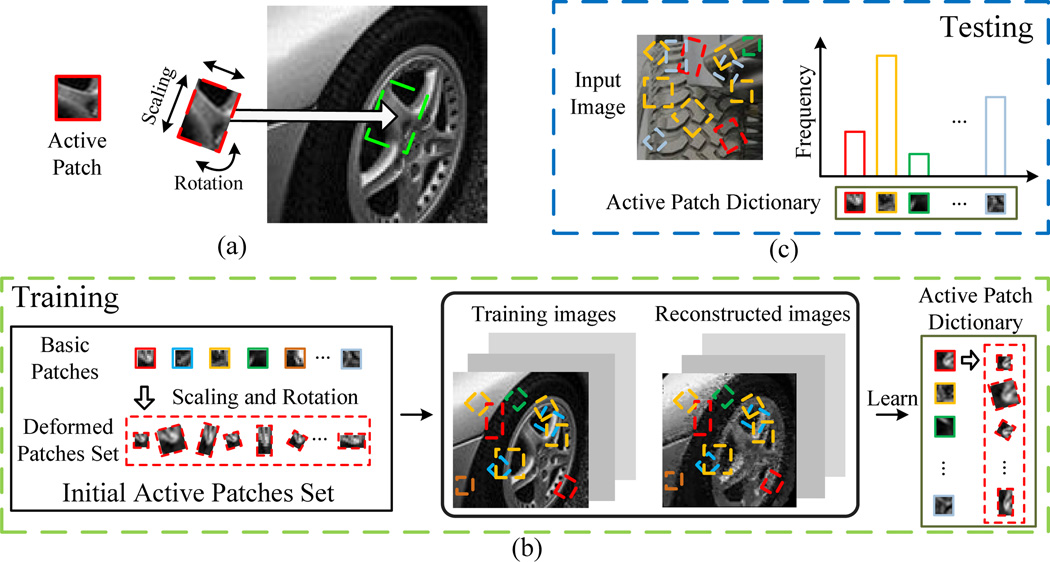Fig. 2.
Illustration of our approach. (a). An active patch will take actions to best fit the image region near a target position (the green rectangle region in the image) in the best way. The actions consist of the combination of scaling and rotation. (b). To implement these actions efficiently, each active patch consists of a basic patch (e.g. the patch in the solid red rectangle in the left panel of (b)) and a deformed patches set (e.g. the patches in the dashed red rectangle). Given an image position, the active patch will find one of its deformed patches that has the maximum matching score with the image region near this position. If the score is larger than a threshold, the active patch is “fired” at the image region. In this way, the images can be reconstructed and represented by a set of firing active patches. We learn the active patch dictionary in a greedy manner using criteria based on the reconstruction of the training images. (c). The histogram of firing frequencies of the active patches in the dictionary will be treated as the feature for appearance classification. (Best viewed in color)

